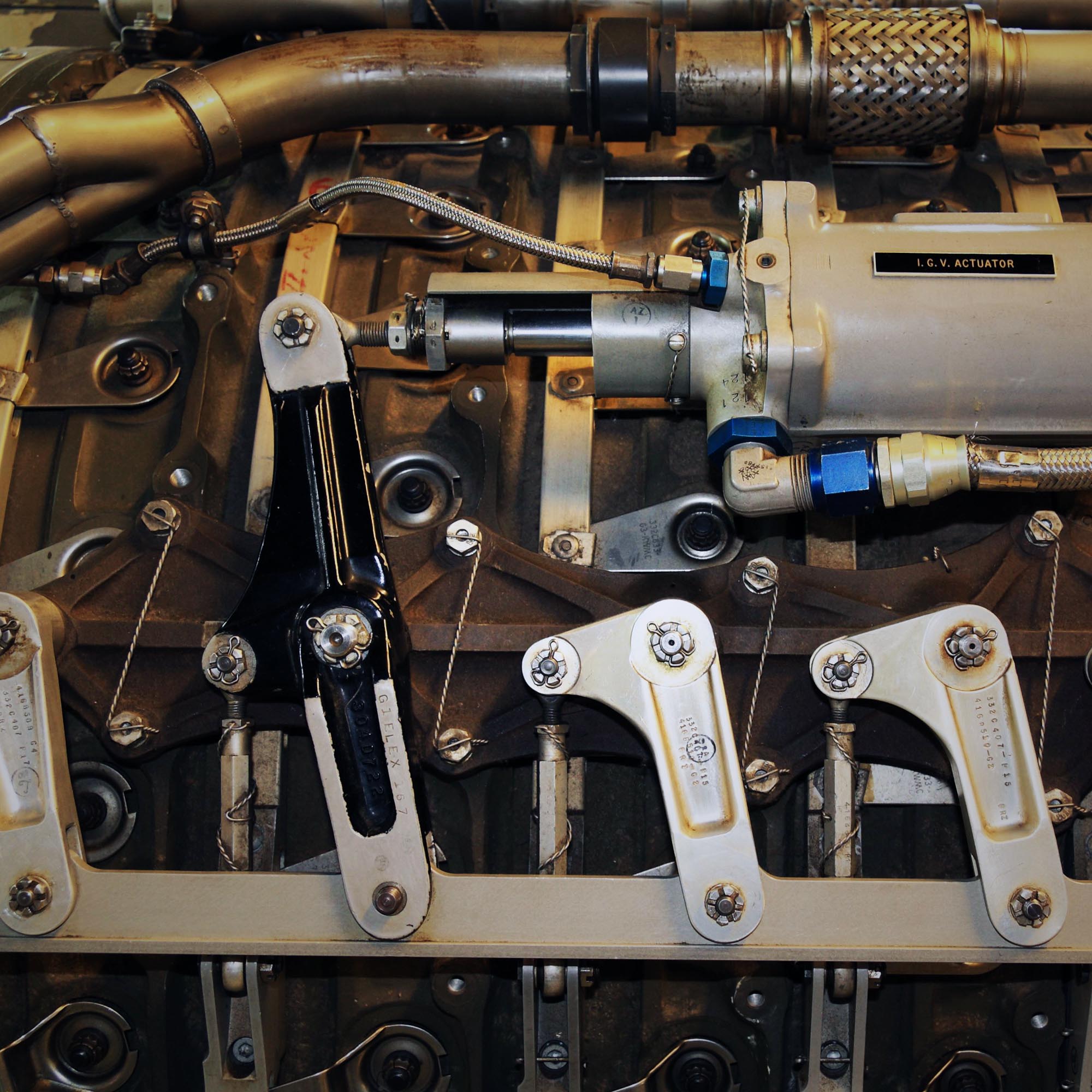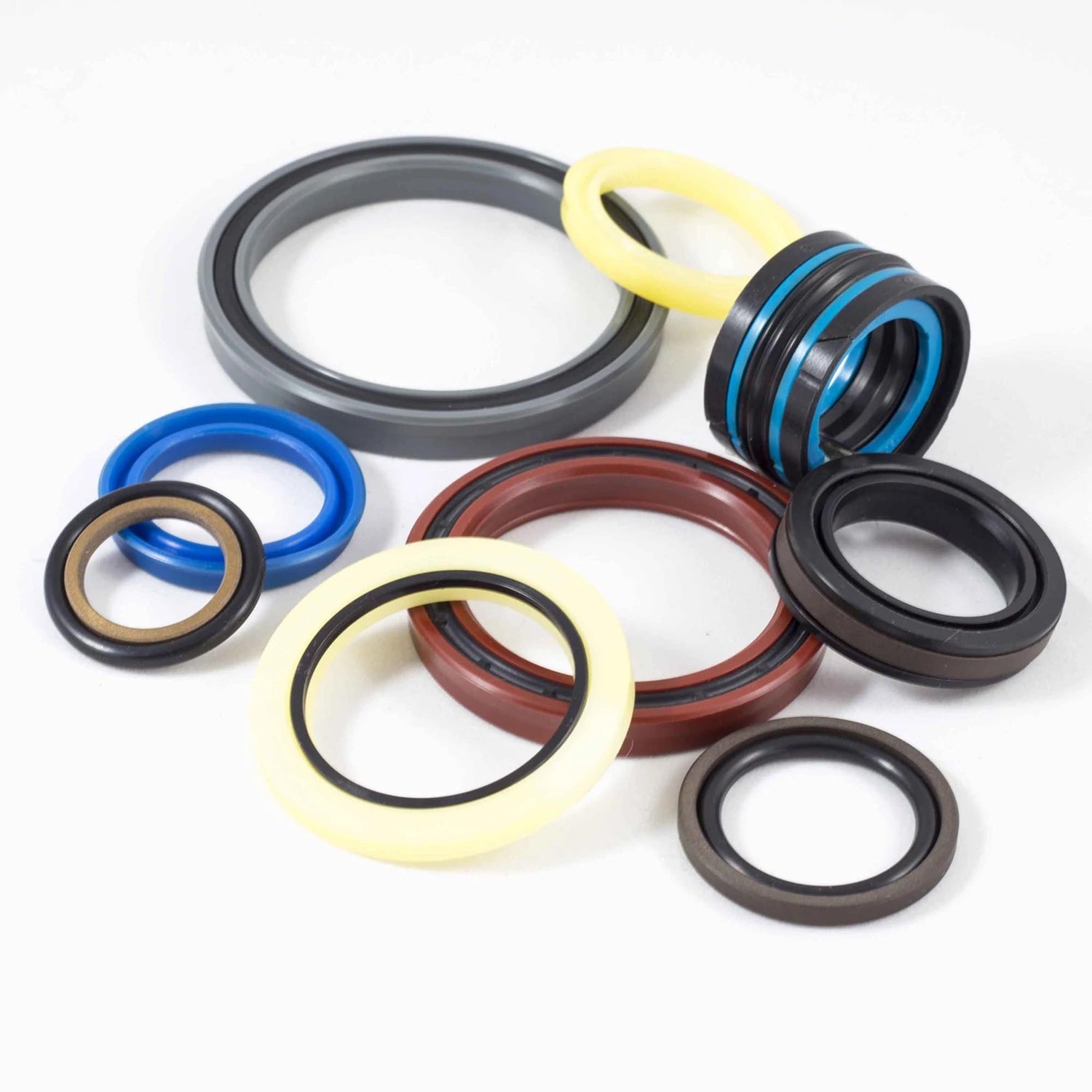
Types of Hydraulic Seals

Common types of hydraulic seals, their variations and the materials used
There are many types of hydraulic seals out there and they come in a variety of shapes and sizes. Using the right seal is vital as their use is critical in providing a way for fluid power to be converted to linear motion.
Each seal type is specially developed to accommodate different variables such as cylinder speeds, temperatures, pressures and applications. They are designed to be placed in a cylinder or piston groove to form a seal that will prevent leakage in the hydraulic system, keeping machinery working correctly and operating safely.
TYPE 1: Piston Seals
Piston seals are dynamic hydraulic seals that are used to prevent the passing of any fluid beyond the piston as the system pressure forces the piston down the cylinder.
The main variations in pistol seals:
-
Single-acting
These piston seals only have to block the pressure from one side of the piston, retaining the pressure which powers the piston to move along the cylinder. They retain fluid on its surface, thus reducing both friction and wear.
-
Double-acting
Where as, these seals require pressure from both sides to force the piston along the bore, meaning that in order to properly seal them you must use a double-acting seal that can seal the dynamic pressure from both sides.
Sometimes however you can use two single acting seals in a 'back to back' arrangement in order to create a double acting seal system.
TYPE 2: Rod Seals
Rod seals are vital to maintaining an efficient hydraulic system, as they are responsible for both preventing fluid leakage from within a hydraulic cylinder and protecting it against dirt and other exterior contaminates.
Static seals that installed directly into the housing or glands of a system, rod seals are designed to provide dynamic sealing pressure while the piston rod is in dynamic motion.
The main types of rod seals:
-
RFD Rod Seals
Also known as Single Acting Split Housing, are heavy duty seals with an anti-extrusion ring for added protection. Made from rubberized fabric and easily fitted in the housing where it reduces friction and wear, keeping applications sealed and secure from harmful fluid leakages.
-
RTA Rod Seals
These Single Acting seals are used in hydraulic cylinders that have small groove dimensions. Fitted into the small housing, the RTA seals are combined with an NBR O-ring and PTFE inner to maximize sealing resistance against even the highest pressure.
-
RUB Rod Seals
Made for sealing piston rods, these Single Acting seals include an additional O-ring profile that lubricates and resists abrasions. RUB seals made from Polyurethane are most effective, including a 300 BAR resistance which is suitable for high-pressure systems.
TYPE 3: Wiper Seals
Also known as scraper seals, they are often used together with other sealing components to let a ram rod pass through the inner bore of a seal, while preventing leakage.
Wiper seals are extremely important in ensuring that outside contaminants are kept out of hydraulic operating systems. By keeping everything from dirt to moisture outside of the system, scraper seals prevent any damage to rods, cylinder walls, seals and other important elements of the system.
When the wiper seals are not secured or fail, it can cause component failure in a fluid power system that leaves other pieces of the operation open to serious damage.
The main types of wiper seals:
-
WRB Wiper Seals
These Medium Duty scraper seals help prevent moisture and dirt from accumulating on the rod. Made from an NBR compound and inserted directly into a grooved housing.
-
WRC Wiper Seals
Also including a lip, WRC seals do not extend past the cylinder cover. They are used in Medium Duty applications and can be installed into a simple groove design.
-
WCA Wiper Seals
Featuring a corrosion-resistant metal ring that encompasses the NBR seal, these Heavy Duty seals follow the side movement of the rod to keep it free from heavily deposited dirt.
Most wiper seals are made from polyurethane and include a secondary lip that is used to catch any oil that has seeped past the main seal. The lip can also scrape any contaminants from the rod surface, giving them the title of “double-edged wiper seals”.
TYPE 4: Guide (Wear) Rings
Guide rings are designed to prevent two dynamic surfaces within a hydraulic system from rubbing together.
These easily replaceable rings, also called Wearing Rings, are attached to the impeller and/or the pump casing to allow a small running clearance between the impeller and the pump casing without causing wear to either material.
Guide rings are available various materials such as:
-
Phenolic
-
PTFE
-
Polyacetal
-
Fabric reinforced Phenolic Resin
-
Fabric reinforced Polyester Resin
-
Glass-Fibre reinforced Polyacetal
Guide, or Wear, rings are used in both piston and rod applications , with common styles including butt cut, angle cut, and step cut.
Hydraulic Seal Materials
In order to maximise longevity and functionality in specific applications, hydraulic seals are made from a wide range of materials, each with their own unique properties.
Based on criteria such as operating temperature, chemical interactions, pressure and fluid types, we select the materials that can handle each environment best.
-
Polytetrafluoroethylene (PTFE)
-
Polyurethane (PU)
-
Nitrile (NBR)
-
Viton (FKM)
Our Hydraulic Seals range
We offer a wide range of hydraulic seals suitable for different cylinder types and industries. Whether you need an individual seal or a kit for specific equipment we've got you covered.
